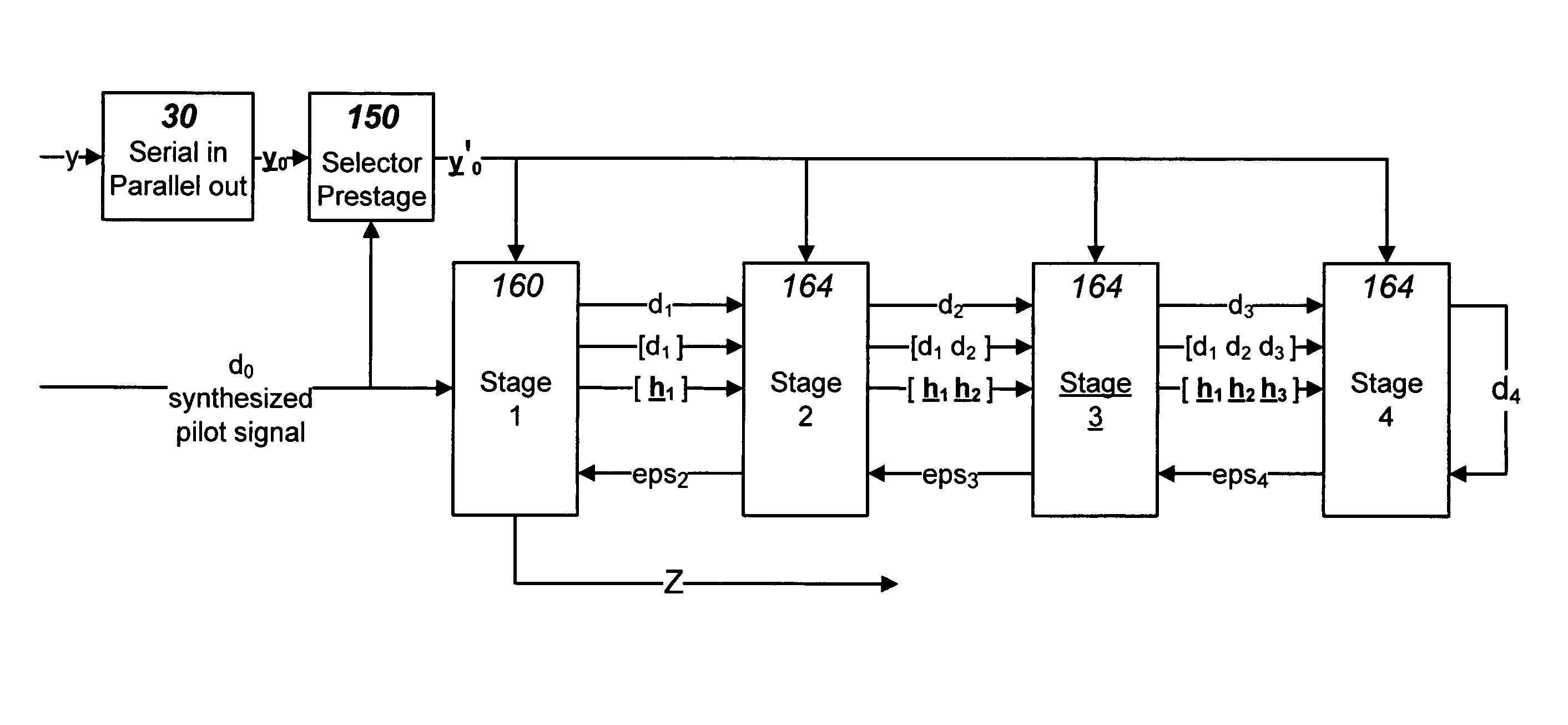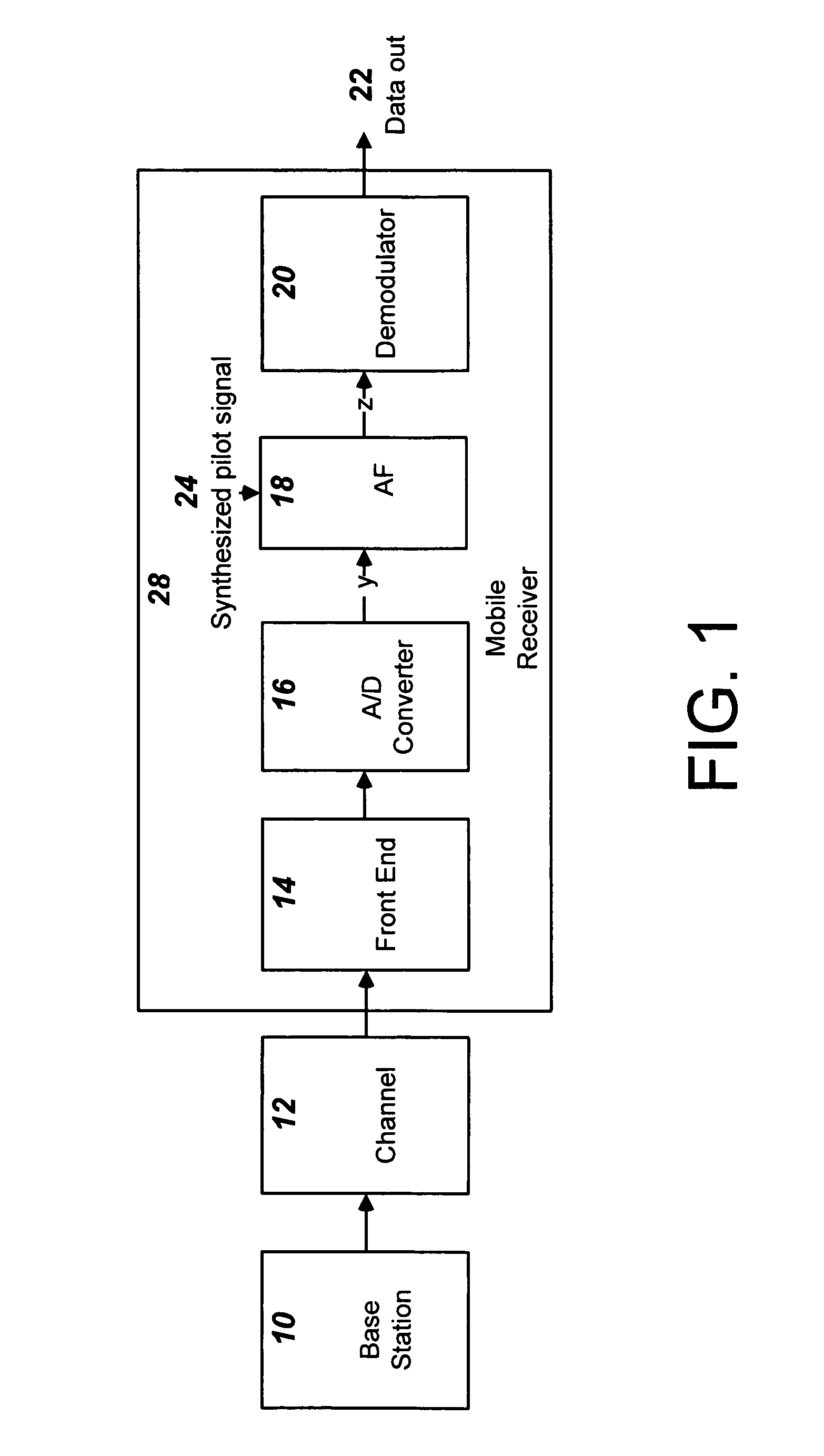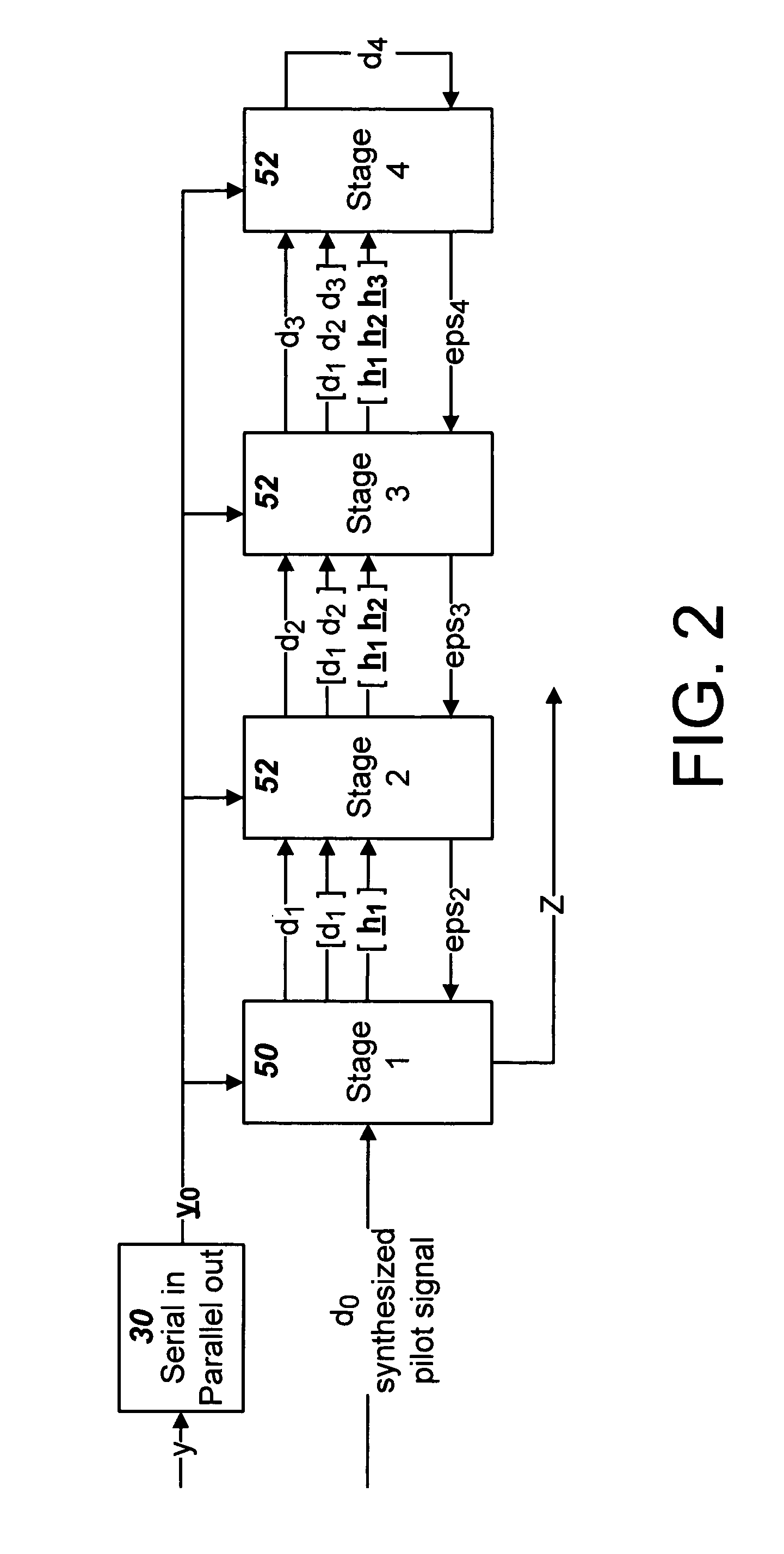Efficient adaptive filters for CDMA wireless systems
a technology of adaptive filter and wireless system, applied in the direction of pulse technique, amplitude demodulation, line-fault/interference reduction, etc., can solve the problems of inability to use equalization techniques to increase the capacity of existing cdma networks, including cdma 2000 networks, and inevitable interferen
- Summary
- Abstract
- Description
- Claims
- Application Information
AI Technical Summary
Benefits of technology
Problems solved by technology
Method used
Image
Examples
Embodiment Construction
[0010]An aspect of the present invention provides a communication system including a receiver having an adaptive filter coupled to receive an input signal comprising a plurality of user signals and a pilot signal. The input signal is characterized by a symbol period defined by a CDMA transmitter. The adaptive filter has at least one filter coefficient determined in part from a multiplication of the input signal by a synthesized pilot signal. The synthesized pilot signal is synchronized with the input signal and the multiplication is performed as a single series of signed addition operations between respective companies of the input signal and the synthesized pilot signals.
[0011]Another aspect of the invention provides a communication system including a receiver having an adaptive filter coupled to receive an input signal comprising a plurality of user signals and a pilot signal. The input signal is characterized by a symbol period defined by an orthogonal code modulation and the ada...
PUM
 Login to View More
Login to View More Abstract
Description
Claims
Application Information
 Login to View More
Login to View More - R&D
- Intellectual Property
- Life Sciences
- Materials
- Tech Scout
- Unparalleled Data Quality
- Higher Quality Content
- 60% Fewer Hallucinations
Browse by: Latest US Patents, China's latest patents, Technical Efficacy Thesaurus, Application Domain, Technology Topic, Popular Technical Reports.
© 2025 PatSnap. All rights reserved.Legal|Privacy policy|Modern Slavery Act Transparency Statement|Sitemap|About US| Contact US: help@patsnap.com



